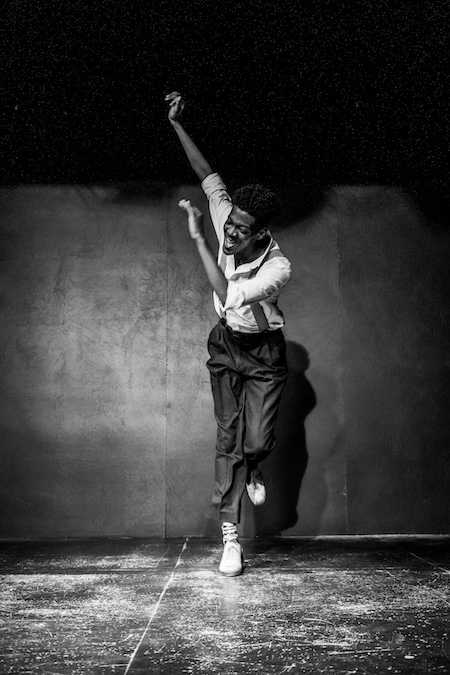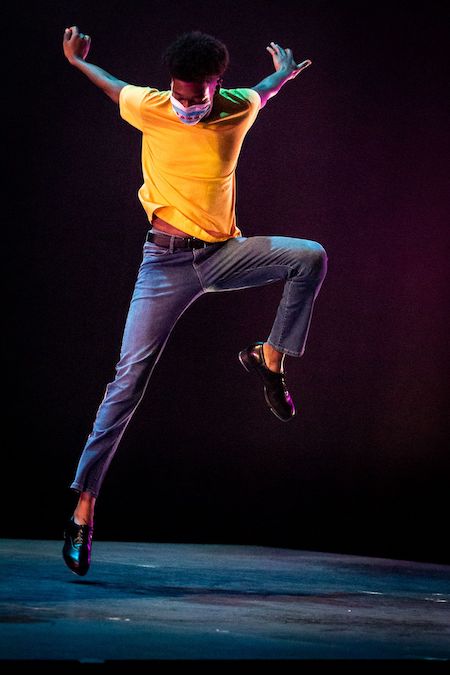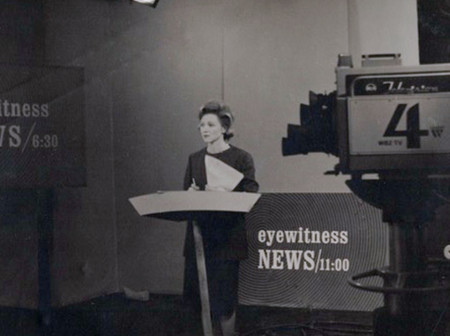When did you discover your love for music and dance?
I was born and raised on the South Side of Chicago, and as a kid I played trombone and tap danced. Music was a constant presence throughout my daily life growing up and I danced any chance I could get. I enjoyed performing for my family and would often put on full concerts at holiday gatherings. I never seriously thought about making a career out of performing; it was just something I loved to do.
How have you pursued tap dance on campus and beyond?
At Northwestern, I discovered Tonik Tap, a student-led tap dance group that I joined my freshman year and instantly fell in love with. We did all of our own choreography and produced two shows each school year. Rehearsing and performing with Tonik are among my favorite memories from my undergraduate career.
After graduating, I began training and performing with Chicago-based professional tap companies Chicago Tap Theatre and Making a Difference Dancing Rhythms. Additionally, I work as a freelance dancer across the city and have collaborated with former Northwestern students on their projects, including work directed by Lucky Stiff ’19 MFA that was performed at the Museum for Contemporary Art and the Prop Thtr. I also debuted a piece I co-choreographed with tap dancer Case Prime in a showcase entitled Something’s Afoot, presented in New York City by the American Tap Dance Foundation.
Making it in the performance world is all about connections. I tell people, “You never know who is in the room, so always be the best version of yourself.”

Photo credit: Thalia Ramirez
What have you recently discovered about tap?
I’ve developed a desire to showcase all the possibilities that tap can be — thinking as both a dancer and a musician, to fully embody a piece of music and create a truly special experience.
I’m also learning more about the history of the dance and the importance of sharing this history. Learning history through tap — the passing down of the movements — feels like its own area of study. The history of tap dance runs parallel to the history of jazz music, and both have had a huge impact on shaping American culture.
As we’re addressing the erasure of the contributions of Black folks in America, I want my community to know that tap is our art form; Black people created tap dance.
What connection do you see between dance and neuroscience?
I know that my brain is hard at work when I dance. When I’m dancing at my best, I’m more than just happy — I’m physically connected to the music and emotionally connected to the audience and the people I’m performing with. Together, we are engaging on this deeper, intimate level of communication and understanding — the feeling is indescribable.
Studying tap dance through the lens of neuroscience could provide insight into exactly what is happening in our brains when we dance, and could lead to discoveries about how to share this experience with others, so more people can express themselves, heal their bodies and strengthen their communities.

Photo credit: Philip Solomonson
Should dance or tap education be considered public health?
I’ve worked with Northwestern professor Billy Siegenfeld, director of Jump Rhythm, a performing and teaching company. His approach to mind-body integration resonated with me, in that it works to prevent injury and provide healing from previous injuries. It also centers around jazz-rhythm-based movement and percussive dance, which connects to my studies of Black dance history and jazz history. Through training with Billy, I’ve gained the confidence to embrace how my body wants to move, rather than superimposing external standards that determine what “looks good.”
Following this approach, we work to listen to our bodies and relate physical principles to emotional concepts and behaviors. When embraced, those behaviors can lead to communal growth, a better connection to your body and those around you, and an overall improved quality of life — all cornerstones in the field of public health.
Interview conducted by Lena Elmeligy ’18




Reader Responses
Fantastic! Of course there is an important public health connection.
—Emma Kowalenko Highland Park, Ill.
Thanks for sharing this story. Tap is a beautiful and entertaining art form which Sterling Harris delivers with grace. I also enjoyed the correlation to jazz (another art form I love) as I’d never have considered it.
—Barbara McStowe '72, Wilmette, Ill.
Wonderful! I have always enjoyed the art of tap dancing. Glad to see he is continuing it.
—Dan Stine '90 MMus, Vienna, Va.
No one has commented on this page yet.
Submit a Response